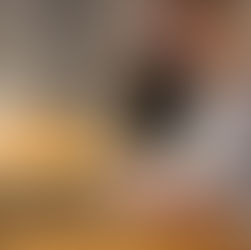Sticking To The Plan | Outlining With Sticky Notes
- avrilmarieaalund
- Aug 21, 2022
- 5 min read
Updated: Oct 10, 2025

The first step for many writers going into a new project involves some form of plotting. Depending on the kind of writer you are, this might involve typing up an in-depth outline that ends up being several dozen pages in length or burying yourself in research and collecting reference materials. You might also use character profile worksheets or create maps of your setting. Or you might just have a moment of inspiration and chase after it, seeing where the story takes you as you write.
As a Plantser, I usually go in with a rough outline consisting of a chapter-by-chapter breakdown, in sections that are about a paragraph in length. Each section covers the basics of the scene, namely which characters are involved, where it takes place, and a brief description of what happens.
While this is my usual tactic for new stories, it's really only one half of my approach.
I've been learning to view the bigger picture of my WIPs. I have a habit of getting so caught up in the smaller details or adding scenes that are ultimately irrelevant because of my love of slower moments, even if they don't always progress the central plot. Even though putting the skeleton of my story in a text document helps to put all of my ideas in one place, it doesn't always make it easy to see it as a whole.
That's where Post-It notes come to my rescue. Those little pieces of paper with a stripe of adhesive on the back have a variety of uses, one of which has played a key role in revamping my overall process.
How It Works
In short, it's a visual aid and an organizational tool.
Similar to the aforementioned text document where I break the story down into a chapter-by-chapter summary, it's a way of establishing an outline for my WIP. For the most part, I'll use one Post-It per chapter unless I anticipate it being longer for plot reasons or one that shifts POVs midway through. I'll then put up the sticky notes in chronological order.
It's not exactly an original idea. In fact, this method resembles the storyboards animators often use when working on a film or a television show. Through rough sketches, they're able to plan out the story they want to tell and keep the ideas from getting tangled up.
The Post-It method is a great way of laying things out in real space because it doesn't require much room.
When I was in college, I just stuck them to the side of my dorm closet. Now, though, I have a sheet of poster board on the wall for the sticky notes to live on.
If you're worried about the adhesive getting on walls or don't have the space, you could get yourself one of those tri-fold display boards you'd see at a standard science fair or a binder with folders or plastic sheet protectors to stick everything onto.
It's simple, but it's helpful.
What It Does
The text document component of my plotting method is great for expanding on plans, but I personally find it's easier to view everything in one place when those scenes are jotted down on sticky notes. That way, I can really assess the shape of my story.
If the display looks cluttered, that's typically a sign to consider scrapping some scenes. If the Post-Its seem a little too spread out, I might seek opportunities to add new scenes. In the event I'm still figuring things out and don't know how I'm getting from one point to another, I'll leave some space between the notes.
Having an in-depth document detailing the scenes has its benefits, but the blocks of text can start to blur together, whereas sticky notes are a more defined separation of each individual part that also makes it easier to see how they go together.
Post-It notes also give me flexibility. When there is a scene that feels like it's in the wrong spot, it's easy to shift things around. It might be moved to fill a gap or even removed altogether if it no longer fits.
Tip: Color-Coding
Sticky notes come in a variety of colors, sizes, shapes—there's even a transparent kind!
There's no specific one you have to use for plotting. I'll often use whatever I have lying around.
But there is one trick I recommend if you're writing with multiple POVs or timelines.
My WIPs POVs alternate between my love interests.
It's not always as straightforward as Character A, Character B, Character A etc. Instead, you'll see a lot of A-B-B-A-A-B-A etc, bouncing around based on where things fall chronologically or when conflicts and subplots need to be addressed.
When I'm plotting with sticky notes, I'll assign each love interest their own color. Any chapters I'm planning to explore through their perspective will be written on sticky notes of that color.
For example, let's say Character A is blue and Character B is red. If I'm shifting POV halfway through (which I've only started doing this draft and only plan to do during one or two chapters in this WIP), I might make a note in each color and tape them together or use a different color entirely.
As is the case with spotting gaps, laying things out in a color-coded fashion makes it easier to see where you're lingering for too long and where you might want to consider switching to the other side of the story. If I see that I have four red sticky notes in a row, I'll try to break that up by either shifting a scene from the other POV up or considering if any of those four scenes are tangential and could be eliminated.
Post-It notes have been an ingredient in my writing process for years. So many of the nonfiction books on my shelves have little flags sticking out of the edges like peacock feathers wherever a tidbit of information caught my eye.
More recently, though, I've started using them to see the bigger picture and go beyond the smaller details. Learning to understand the shape of my story has made it easier for me to recognize what to keep, what to delete, and where there is an opportunity to enhance. It's another method for keeping my Pantser side in line while preventing my Planner side from becoming overwhelmed or fixated on the small stuff.
All in all, it's simple. It's not anything monumental. It's not mind-blowing or game-changing or some revelation that shakes the very foundation of storytelling.
But it does what I need it to do.
I love complexity in fiction, but that doesn't mean I need a complicated plotting process.













Comments